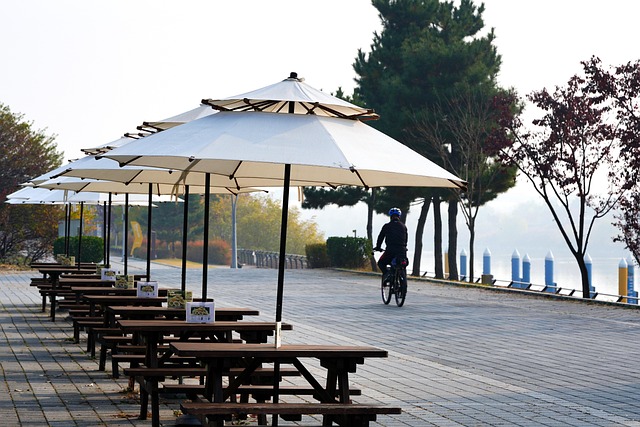Rest areas, those often-overlooked spaces along highways and byways, serve as crucial oases for weary travelers. However, as climate change accelerates and our environment faces unprecedented pressures, it is imperative that we recognize the potential of these areas as vital components in our fight for climate resilience. By revitalizing rest areas, we can enhance their ecological function while providing a place of respite for both people and nature.
Traditionally, rest areas have been viewed primarily as simple stops for refueling and relaxation. Yet, they possess untapped potential as green spaces that can contribute to our environment’s health and resilience. Imagine stepping into a rest area that is not only equipped with picnic tables and restrooms but also features native plants, rain gardens, and solar-powered amenities. These elements help mitigate the effects of urban heat islands, reduce stormwater runoff, and restore local habitats.
As temperatures continue to rise due to climate change, the importance of such green spaces will only magnify. Incorporating native flora into rest areas can combat invasive species, promote biodiversity, and provide essential habitats for local wildlife. Moreover, trees and vegetation play a critical role in capturing carbon dioxide, thus offsetting some emissions that contribute to climate change. Every rest area has the potential to become a mini-ecosystem that actively contributes to combating the environmental crisis.
Furthermore, these revitalized rest areas can serve as educational platforms for the public, raising awareness about sustainability and the ongoing climate challenges we face. Informational kiosks can provide travelers with insights into local ecosystems, conservation efforts, and how they can contribute to a healthier planet. This portion of our highway system can transition from mere convenience stops to centers of engagement with our environment, fostering a deeper understanding of our dependence on nature.
Rest areas can also be designed to serve as resilient infrastructures that withstand extreme weather events, which are becoming increasingly common due to climate change. Implementing features such as permeable paving, water catchment systems, and renewable energy sources would position these areas as models of sustainability within our transportation networks. In doing so, we pave the way for future designs that prioritize environmental sustainability while enhancing traveler experience.
Moreover, the psychological impact of natural spaces cannot be ignored. In the midst of our fast-paced lives, the presence of greenery and the sound of nature can reduce stress, promote relaxation, and strengthen our connection to the environment. Revitalized rest areas that integrate nature will not only serve the immediate needs of travelers but will also foster a sense of responsibility towards our planet, inspiring visitors to take action in their own lives.
As we continue to grapple with the effects of climate change, it is essential that we reevaluate the role of rest areas within our transportation systems. By transforming these spaces into environmentally friendly havens, we can invest in our infrastructure while simultaneously nurturing our planet. The potential for rest areas to contribute positively to climate resilience is immense. It is time to take action, ensuring that these places serve not just as transient stops but as integral components of a sustainable future.



